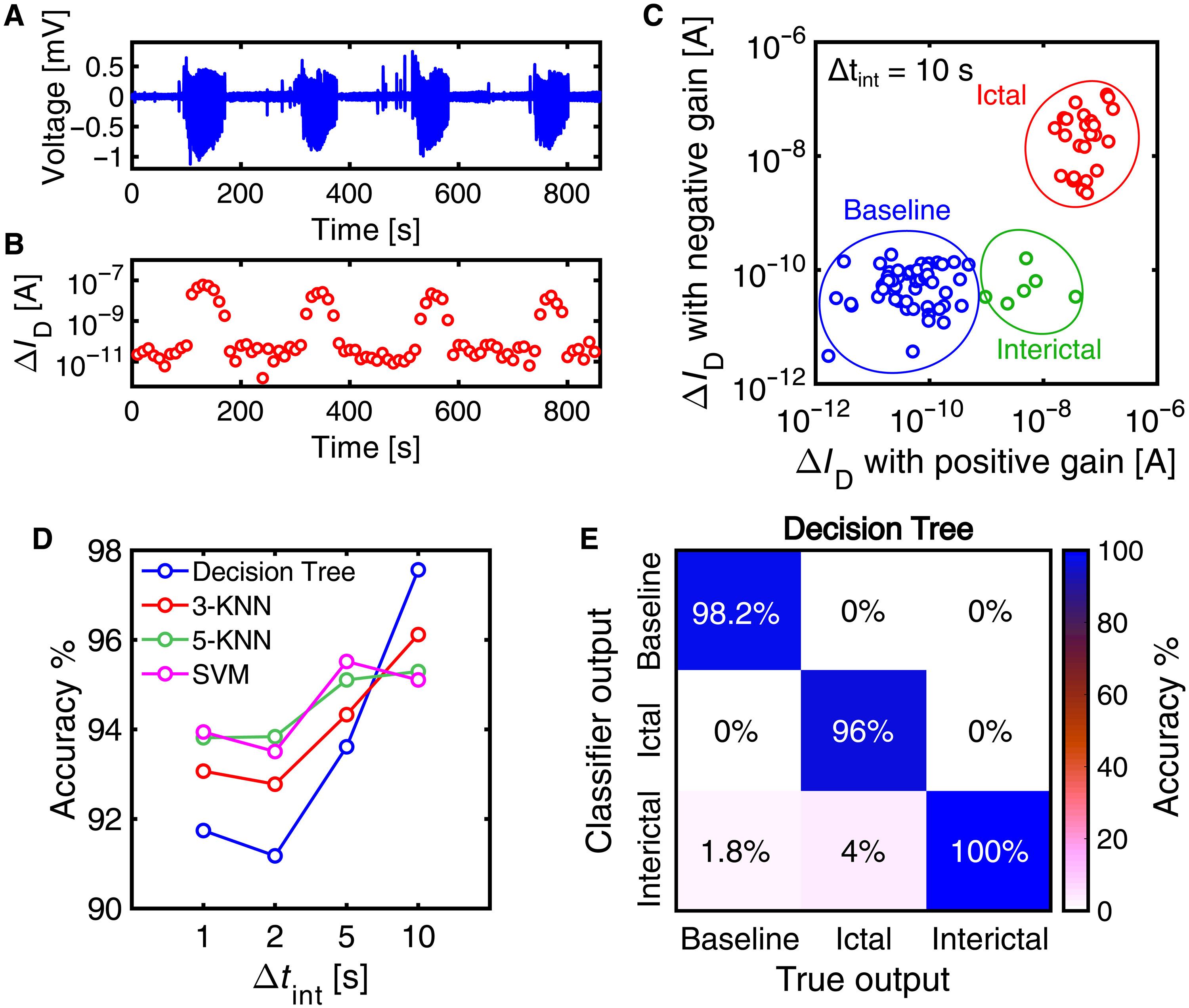基于mos2电荷阱存储器件的储层计算检测
IF 12.5
1区 综合性期刊
Q1 MULTIDISCIPLINARY SCIENCES
引用次数: 0
摘要
神经系统疾病是一项重大的全球健康负担,影响着全世界数百万人。开发有效治疗和预防措施的关键挑战是实现具有早期检测能力的低功耗可穿戴系统。传统的策略依赖于机器学习算法,但它们的计算需求往往超过小型化系统所能提供的。受人脑启发的神经形态计算展示了低功耗芯片计算的能力。在这种情况下,二维(2D)半导体由于其独特的电子特性、原子尺度的厚度和可扩展性而具有显著的前景,使其成为低功耗应用的理想选择。这项工作提出了一种神经形态储层计算系统,利用基于MoS 2的电荷陷阱存储器(CTMs)来处理电生理信号。由于从体外啮齿动物ictogenesis模型中记录的局部场电位(LFP)的非线性积分,实现了实时癫痫检测。研究结果支持基于MoS - 2的CTMs作为低功率生物医学器件用于癫痫的临床诊断和治疗。本文章由计算机程序翻译,如有差异,请以英文原文为准。

Seizure detection via reservoir computing in MoS2-based charge trap memory devices
Neurological disorders are a substantial global health burden, affecting millions of people worldwide. A key challenge in developing effective treatments and preventive measures is the realization of low-power wearable systems with early detection capabilities. Traditional strategies rely on machine learning algorithms, but their computational demands often exceed what miniaturized systems can provide. Neuromorphic computing, inspired by the human brain, demonstrated capabilities of on-chip computing with low power consumption. In this context, bidimensional (2D) semiconductors hold notable promise, thanks to their unique electronic properties, atomic-scale thickness, and scalability, making them ideal for low-power applications. This work presents a neuromorphic reservoir computing system exploiting MoS2-based charge trap memories (CTMs) for processing of electrophysiological signals. Real-time seizures detection is achieved, thanks to the nonlinear integration of local-field potential (LFP) recorded from in vitro rodent models of ictogenesis. The results support MoS2-based CTMs for low-power biomedical devices in clinical diagnosis and treatment of epilepsy.
求助全文
通过发布文献求助,成功后即可免费获取论文全文。
去求助
来源期刊

Science Advances
综合性期刊-综合性期刊
CiteScore
21.40
自引率
1.50%
发文量
1937
审稿时长
29 weeks
期刊介绍:
Science Advances, an open-access journal by AAAS, publishes impactful research in diverse scientific areas. It aims for fair, fast, and expert peer review, providing freely accessible research to readers. Led by distinguished scientists, the journal supports AAAS's mission by extending Science magazine's capacity to identify and promote significant advances. Evolving digital publishing technologies play a crucial role in advancing AAAS's global mission for science communication and benefitting humankind.
 求助内容:
求助内容: 应助结果提醒方式:
应助结果提醒方式:


